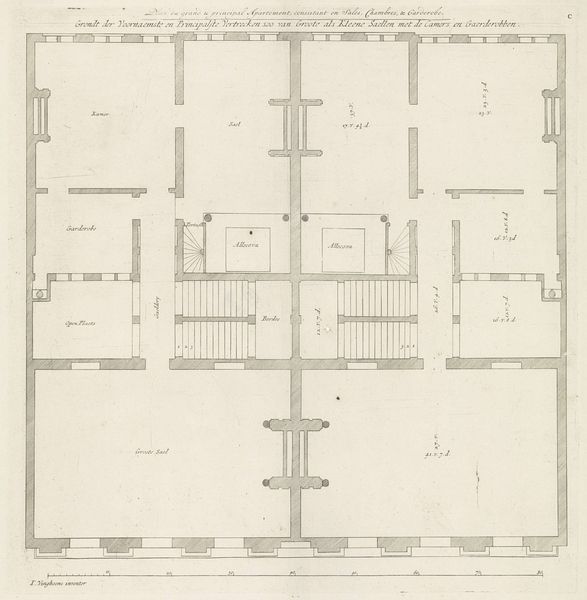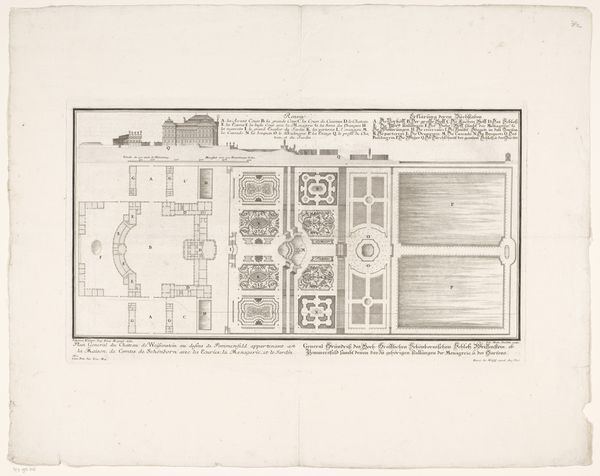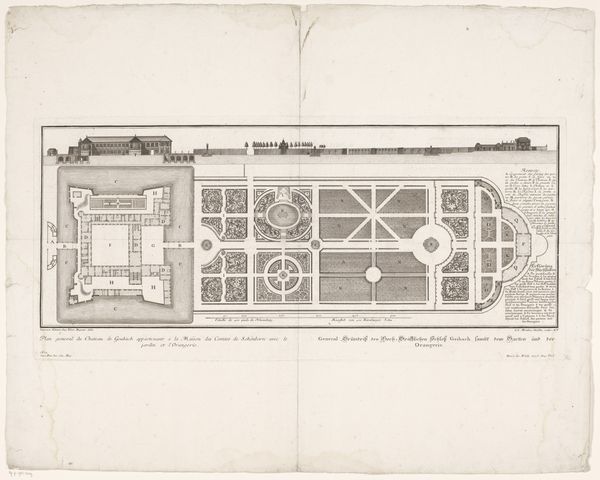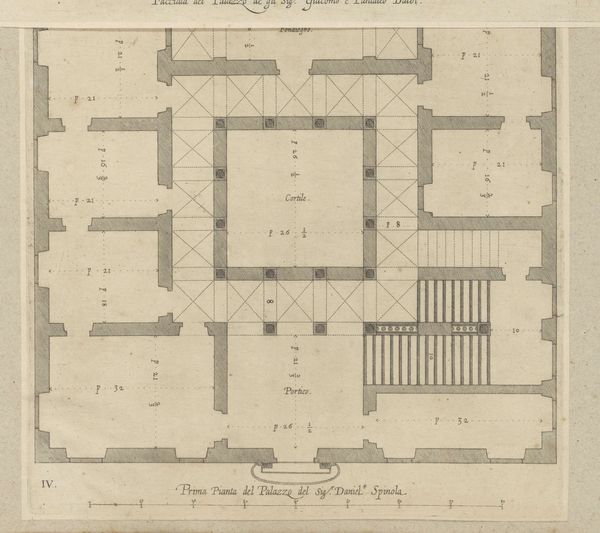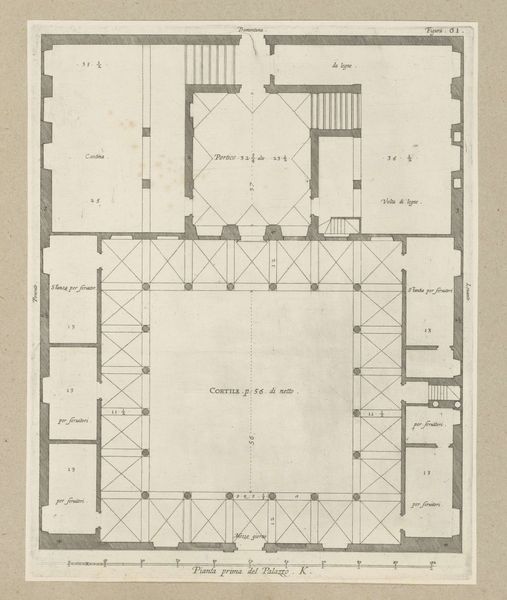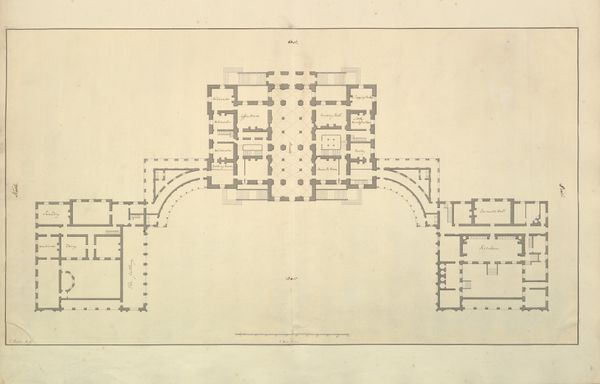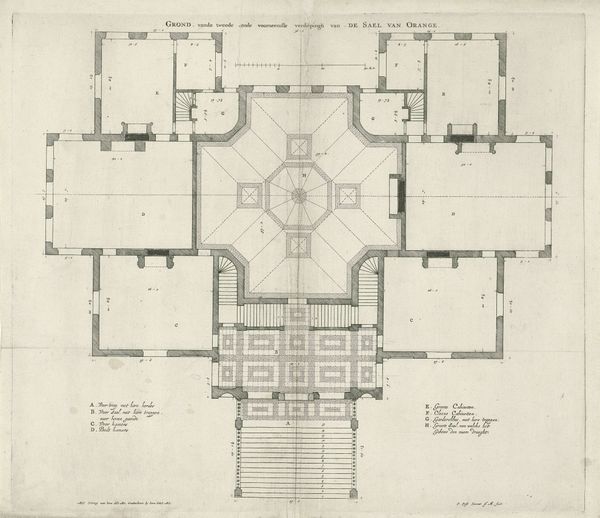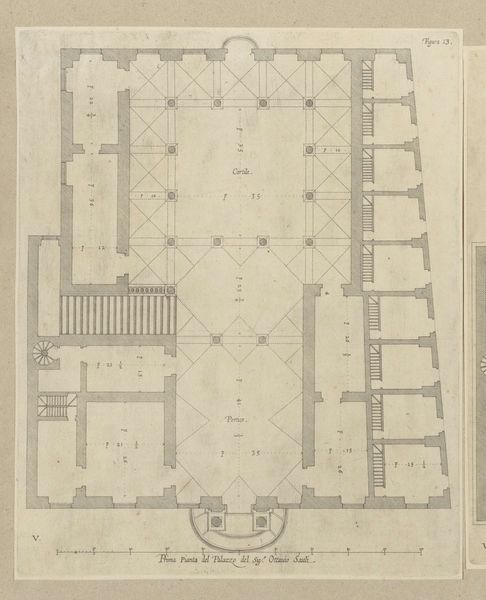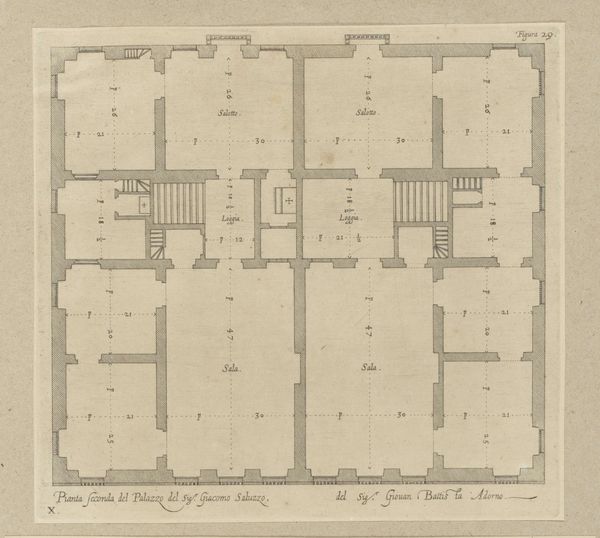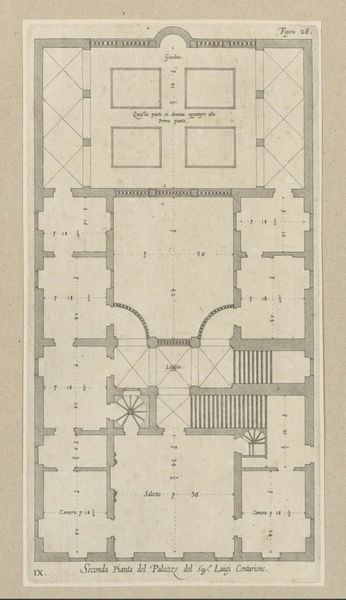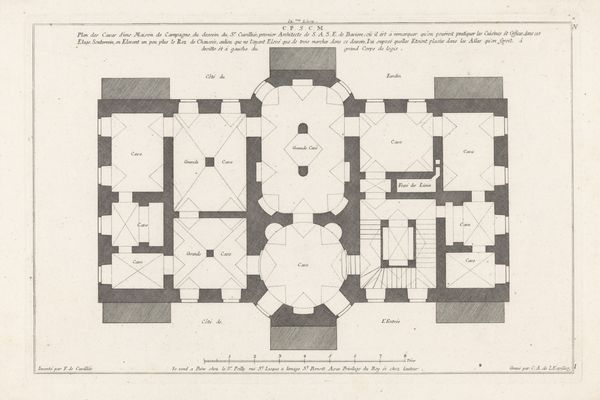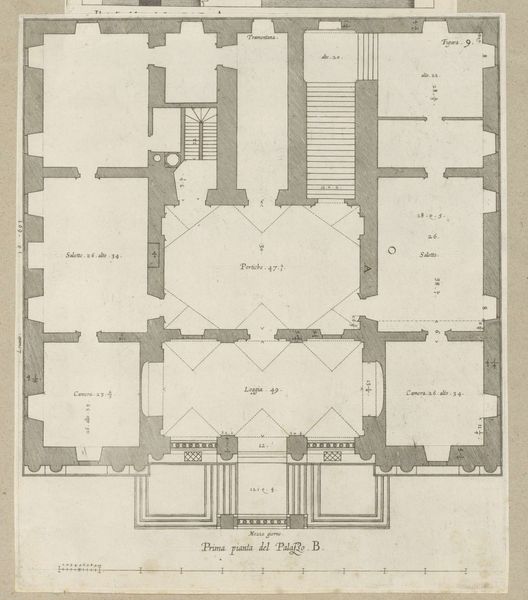
drawing, print, etching, site-specific, architecture
#
drawing
#
baroque
# print
#
etching
#
landscape
#
site-specific
#
architecture
Dimensions: height 295 mm, width 380 mm
Copyright: Rijks Museum: Open Domain
Curator: Here we have Jan Matthysz.’s 1655 print, titled "Plattegrond van Paleis Huis ten Bosch en het omliggende landgoed," an etching showing the layout of the Huis ten Bosch Palace and its gardens. Editor: At first glance, it evokes a sense of structured formality and almost sterile precision. The strict geometric organization gives it an intellectual rather than emotional presence, as if intended to showcase control and order above all else. Curator: Precisely. The piece illustrates not only architectural design but also power dynamics, the relationship between humans and nature, and the broader socio-political context of 17th-century Dutch aristocracy. The Baroque style emphasized grandeur and order, reflecting the Dutch Republic's aspirations. Editor: Thinking of recurring motifs, the squares, rectangles, and the axial symmetry—these are archetypal symbols of stability and balance. The careful arrangements within the garden spaces almost appear like coded messages, mirroring a kind of societal blueprint with meticulously laid pathways indicating direction, perhaps a demonstration of intent, and an illustration of power and legacy. Curator: Definitely, particularly when viewed through the lens of contemporary theory, Huis ten Bosch palace symbolizes not only spatial planning but also the construction of identity. The palace, originally built by Amalia von Solms, became deeply intertwined with the representation of her power as a woman in a patriarchal society. Editor: Moreover, consider how landscapes can reflect human ideas onto nature, expressing desired virtues through structured garden features. These symbols gain deeper layers through association with history and mythology, serving as emblems within a collective memory. Curator: This reminds us that even something as seemingly objective as an architectural blueprint has inherent social and political implications that warrant further examination through cultural lenses. Editor: Agreed, and by recognizing the rich symbolic nature inherent to such detailed renderings, we've been given a deeper understanding of both cultural ideals and material culture in Jan Matthysz.’s image.
Comments
No comments
Be the first to comment and join the conversation on the ultimate creative platform.

